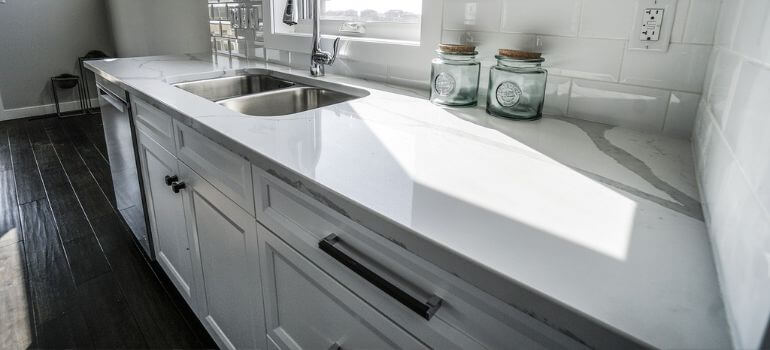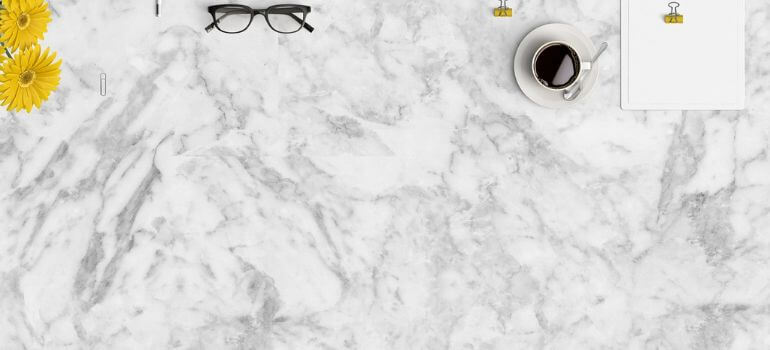In the realm of interior design, the choice of materials plays a pivotal role in achieving the desired aesthetics. When it comes to quartzite, two exquisite options that often stand out are White Pearl and Sea Pearl. Let’s dive into the depths of their characteristics, pros, and cons to help you make an informed decision for your next project.
Introduction to White Pearl and Sea Pearl Quartzite
Quartzite, a metamorphic rock, is revered for its durability and captivating appearance. White Pearl and Sea Pearl, two distinct varieties, have gained popularity in the world of design.
Composition and Geological Formation
Understanding the geological aspects of these stones unveils their unique compositions and how they came into existence. This knowledge is crucial for appreciating their individual qualities.
White Pearl Quartzite Composition
White Pearl Quartzite, formed through the metamorphism of sandstone, exhibits a predominantly white hue. The interplay of minerals during its formation results in a mesmerizing array of patterns.
Sea Pearl Quartzite Composition
Sea Pearl Quartzite, on the other hand, boasts a composition influenced by the presence of various minerals. The geological forces that shaped it contribute to its distinct aesthetic.
Physical Characteristics
Delving into the physical attributes of these quartzites reveals the nuances that set them apart.
Color Palette
White Pearl Quartzite primarily features a pristine white color, reminiscent of the purity of pearls. This neutrality allows for versatile design applications.
Sea Pearl Quartzite presents a captivating blend of colors, reminiscent of oceanic hues. Its palette ranges from subtle greys to hints of blue and green, evoking a serene underwater ambiance.

Veining Patterns
While White Pearl showcases subtle veining, Sea Pearl takes it a step further with more pronounced and intricate patterns. The veining in Sea Pearl mimics the ebb and flow of ocean currents.
Durability and Resistance
The longevity of these quartzites is a crucial factor for potential buyers.
White Pearl Quartzite and Sea Pearl Quartzite share exceptional durability and resistance to heat and scratches. Their hard surfaces make them ideal choices for kitchen countertops and flooring.
Popular Uses in Interior Design
Exploring how these quartzites are employed in design projects sheds light on their versatility.
White Pearl’s neutral tones make it a favorite for creating elegant and timeless spaces. It complements various design styles, from classic to modern.
Sea Pearl’s dynamic color palette finds its niche in creating vibrant and visually stimulating interiors. It adds character to spaces seeking a bold statement.
Maintenance and Care Tips
While both quartzites are resilient, understanding their specific care requirements ensures a lasting aesthetic appeal.
Regular sealing is recommended for White Pearl Quartzite to maintain its pristine appearance. Sea Pearl Quartzite, with its intricate patterns, benefits from gentle cleaning to preserve its visual allure.
Cost Comparison
In the world of design, budget considerations are paramount. Let’s compare the costs associated with these two quartzites.
While White Pearl Quartzite is generally more budget-friendly, Sea Pearl Quartzite’s unique aesthetic may justify a higher investment for those seeking a distinctive look.
Availability in the Market
The accessibility of these quartzites plays a crucial role in decision-making for designers and homeowners alike.
White Pearl Quartzite is widely available, making it a convenient choice for various projects. Sea Pearl Quartzite, with its growing popularity, may require more effort to source but is worth the search.
Pros and Cons of White Pearl Quartzite
Pros
- Versatile design applications
- Budget-friendly option
- Timeless aesthetic
Cons
- Prone to etching if not sealed regularly
Pros and Cons of Sea Pearl Quartzite
Pros
- Captivating and unique color palette
- Adds character to any space
- Durable and resistant
Cons
- Higher cost compared to White Pearl
- May require more effort to source
Customer Reviews and Experiences
Real-world experiences provide valuable insights into the performance and satisfaction of users with these quartzites.
Positive reviews highlight the beauty and durability of both White Pearl and Sea Pearl Quartzites. However, individual preferences may influence satisfaction.
Expert Recommendations
Design experts often offer guidance based on their professional experiences.
Experts recommend White Pearl Quartzite for projects where a timeless and versatile aesthetic is desired. Sea Pearl Quartzite is recommended for those seeking a bold and unique design element.
Choosing the Right Quartzite for Your Project
Considering all aspects, making an informed decision aligns with the vision for your project.
Evaluate the design requirements, budget constraints, and personal preferences to choose between the classic elegance of White Pearl or the dynamic allure of Sea Pearl.
Installation and Fabrication Considerations
Ensuring a seamless integration of these quartzites into your space involves understanding the installation and fabrication nuances.
Professional installation is recommended for both White Pearl and Sea Pearl Quartzites to guarantee a flawless finish. Fabrication intricacies may vary, so consult with experts to optimize the visual impact.
Trends and Future Outlook
As design trends evolve, understanding the trajectory of these quartzites in the market is essential.
Both White Pearl and Sea Pearl Quartzites are expected to maintain their popularity, with a growing demand for unique and personalized design elements.
Conclusion
In the realm of quartzite, White Pearl and Sea Pearl stand out for their unique characteristics. Whether you prefer the timeless elegance of White Pearl or the dynamic allure of Sea Pearl, both options offer durability and visual appeal. The choice ultimately boils down to your design vision, budget considerations, and personal preferences.
FAQs
Yes, generally White Pearl Quartzite is more budget-friendly.
Regular sealing, typically every 6 to 12 months, is recommended.
While it doesn’t require special care, gentle cleaning is advisable to maintain its visual allure.
Absolutely, White Pearl’s neutral tones make it versatile for various design styles.
The trend indicates a growing demand for personalized and unique design elements, with both White Pearl and Sea Pearl expected to maintain popularity.



